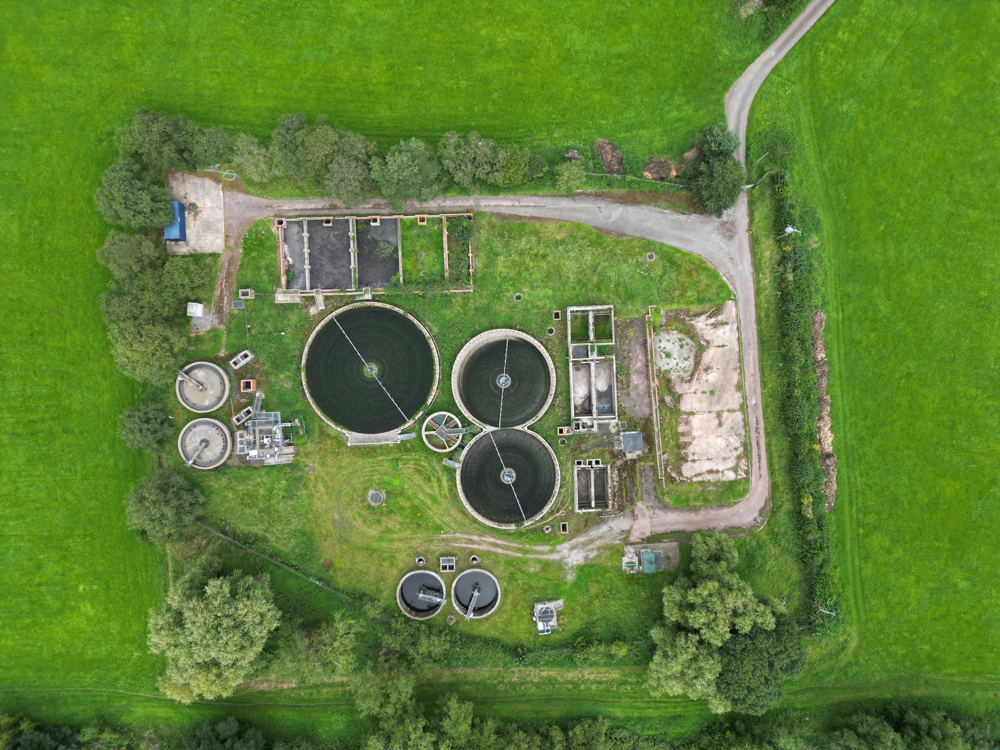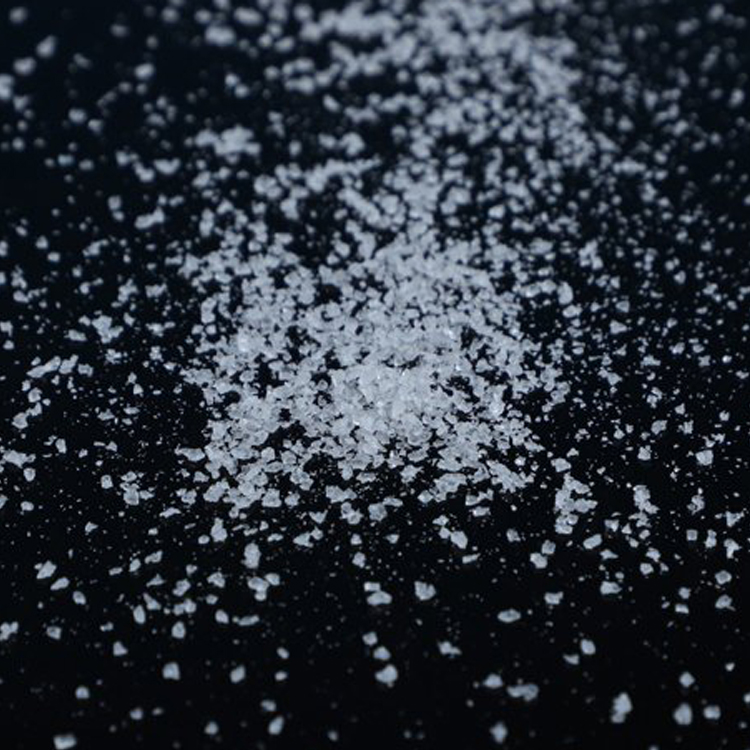
 Anionic polyacrylamide (PAM) polymers are critical flocculants in industrial wastewater treatment, where they help settle suspended solids and clarify effluent britannica.com. In neutral-to-alkaline waste streams (e.g. steel mill, electroplating, mining effluent), adding anionic polyacrylamide causes fine particles to aggregate into large flocs that settle rapidly. The result is cleaner water, lower turbidity, and easier solid-liquid separation – essential for meeting discharge regulations. A variety of PAM polymer products (powders and emulsions) are available, including specially tailored anionic grades. (See our Anionic PAM flocculant products and Wastewater Treatment Solutions pages for details.)
Anionic polyacrylamide (PAM) polymers are critical flocculants in industrial wastewater treatment, where they help settle suspended solids and clarify effluent britannica.com. In neutral-to-alkaline waste streams (e.g. steel mill, electroplating, mining effluent), adding anionic polyacrylamide causes fine particles to aggregate into large flocs that settle rapidly. The result is cleaner water, lower turbidity, and easier solid-liquid separation – essential for meeting discharge regulations. A variety of PAM polymer products (powders and emulsions) are available, including specially tailored anionic grades. (See our Anionic PAM flocculant products and Wastewater Treatment Solutions pages for details.)
Polyacrylamide (PAM) is a water-soluble synthetic polymer of acrylamide monomers en.wikipedia.org. Its repeating unit is –CH₂–CH(CONH₂)–, forming a long linear chain that is highly hydrophilic en.wikipedia.org en.wikipedia.org. Copolymerizing acrylamide with acid monomers (e.g. acrylic acid) introduces –COO⁻ groups, yielding anionic PAM; with basic monomers (e.g. DADMAC), yields cationic PAM. The charge density ("ionicity") is controlled by the percent of charged monomers. Non-ionic PAM has zero charge (all acrylamide), whereas anionic PAM has negative –COO⁻ groups along the chain, and cationic has positive –NR₃⁺ groups. The polymer's high molecular weight (often tens of millions) means each chain can span many particles, creating a bridging flocculation effect chemicalbook.com frankchemical.com.
In practice, anionic PAM works by two main mechanisms: charge neutralization and bridging. The negative PAM chain adsorbs onto positively charged particle surfaces or helps compress the electric double layer, reducing repulsive forces. Simultaneously, long polymer tails extend into the solution and attach to other particles, physically linking them together chemicalbook.com en.wikipedia.org. This "adsorption-bridging" causes micro-flocs to collide and coalesce into large floccules that rapidly settle chemicalbook.com en.wikipedia.org. The diagram below illustrates flocculation by polymer bridging.
Figure: Anionic PAM chains attach to fine particles (dots), neutralizing charge and forming polymer bridges that pull particles into large flocs for settling chemicalbook.com en.wikipedia.org.
Anionic PAM's versatility makes it invaluable across many industries:
Industrial Wastewater (Mining, Metallurgy, Electroplating): High-alkalinity effluents with mineral solids (e.g. tailings, slag washing, coal washing) benefit from anionic PAM flocculation sinofloc.com sinofloc.com. For example, steel mill and electroplating plant wastewaters often carry positively charged metal hydroxides; anionic PAM quickly clarifies such water. In mining and mineral processing, anionic PAM aids settling of ore tailings and ultrafine particles, reducing turbidity.
Municipal Water & Sewage: In water treatment plants, trace amounts of anionic PAM (often combined with coagulants) improve sedimentation of flocs and removal of dissolved organics. Even at doses <0.5 mg/L, anionic PAM can significantly enhance settling by bridging flocs en.wikipedia.org britannica.com. It's also used in sewage sludge dewatering (usually after cationic PAM) to improve solids capture.
Paper & Pulp: Anionic PAM is added as a retention and drainage aid. It binds fillers and fibers, improving paper machine runnability and water removal. (Cationic PAM is also used as a paper strengthener chemicalbook.com, but anionic grades help with long-fiber dispersion and drainage in neutral to alkaline papermaking.)
Oil & Gas and Frac Fluids: Partially anionic polyacrylamide copolymers (hydrolyzed PAM) are widely used in enhanced oil recovery (EOR). When injected into oil reservoirs, they increase water viscosity for better sweep efficiency. In water-based fracturing fluids, anionic PAM can also serve as a polymeric stabilizer or flocculant to remove fines.
Starch & Alcohol Production: Starch and distiller's grains wastewater contains suspended starch and solids. Adding anionic PAM causes the starch to flocculate; the settled solids are pressed into cakes for animal feed, while clarified water can be recycled.

An aerial view of a modern wastewater treatment plant (above) illustrates how circular clarifiers are used for flocculation and settling. Anionic PAM flocculants are routinely dosed into such clarifiers to accelerate solids settling britannica.com. Compared to inorganic coagulants alone, PAM yields stronger flocs at much lower doses, improving effluent quality and throughput. In all these applications, our PAM polymer products (including liquid/emulsion and dry flocculant grades) are formulated to provide optimum performance for each process.
| PAM Type | Charge | Typical Uses and Conditions |
|---|---|---|
| Anionic PAM (–COO⁻ groups) | Negative (due to carboxylate groups) | Suited for high-pH, inorganic-laden wastewater with positively charged particles. Common in steel, mining, coal-washing effluents, and starch/alcohol waste tairanchemical.com. Also used in clarifiers and sludge dewatering. |
| Cationic PAM (+ groups) | Positive (e.g. –NH₃⁺, quaternary ammonium) | Best for acidic or high-organic waste containing negatively charged colloids. Used in sludge dewatering (sewage sludge cake), textile dyeing and paper industries, and for binding negatively charged dyes and soils tairanchemical.com. |
| Nonionic PAM (no charge) | Neutral | Functions via pure bridging (no charge neutralization). Useful in low-ionic, weakly charged waters (e.g. some potable water clarifications). Sometimes used after cationic dosing to grow flocs. Best in acidic pH where ionic effects are minimal tairanchemical.com. |

This table summarizes that anionic PAM is our go-to flocculant when treating wastewater with positive or neutral colloids, whereas cationic PAM serves the opposite case (negative colloids), and nonionic PAM can assist in bridging when charge-based mechanisms are insufficient tairanchemical.com. (For more details on each type, see our polyacrylamide products and flocculant comparison pages.)
Selecting the right PAM grade involves matching charge density and molecular weight to the water characteristics. Higher charge (ionicity) increases adsorption on particles but may require more careful pH control. Very high molecular weight (>10⁷ Da) gives powerful bridging and large floc formation, but these polymers dissolve more slowly. In practice, start by jar tests: vary anionic PAM dose and stir intensity to find the best turbidity removal.
Typical dosing levels vary by application. In water and sewage treatment, optimal doses are often in the range of 0.03–0.4 mg/L (ppm) tairanchemical.com. As shown by pilot studies, below ~0.03 mg/L flocculation is weak, whereas doses above ~0.4 mg/L can cause excessively rapid floc growth and sludge carry-over. In high-solids or sludge processes, doses are higher: 0.5–5 ppm or more may be used, depending on solids concentration. Always add PAM to the middle of the flocculation zone (after any coagulant stage) to allow time for bridging. Overdose can actually restabilize particles, so gradual titration is key.
For best results: dissolve dry anionic PAM thoroughly (or use emulsion-grade polymer) and dose under moderate shear so chains unfurl. Avoid adding PAM too early or too late in the coagulation/flocculation sequence. Also, factors like water hardness, pH, and temperature affect performance (high hardness compresses polymer loops, low temperature slows dissolution). In many cases, combining anionic PAM with inorganic coagulants (like alum or PAC) yields synergy: the coagulant neutralizes charge and forms microflocs, then PAM links them into dense flocs.
What is polyacrylamide and how does it work? Polyacrylamide (PAM) is a synthetic polymer made by polymerizing acrylamide monomers en.wikipedia.org. Anionic PAM contains negatively charged –COO⁻ groups. In water treatment, PAM acts as a flocculant by adsorbing onto particles and forming polymer bridges. These bridges tie particles together, forming larger flocs that settle out chemicalbook.com en.wikipedia.org.
What are the differences between PAM, anionic PAM, and polymer acrylamide? "PAM polymer" is the general term for any polyacrylamide flocculant. Anionic polyacrylamide specifically refers to PAM modified with anionic (acidic) groups. In contrast, cationic PAM has positive groups, and nonionic PAM has none. The term "polymer acrylamide" is just another way of saying polyacrylamide polymer. All these forms share the amide backbone (–CONH₂) but differ in charge https://www.tairanchemical.com/.
How do I choose the right anionic PAM grade? Consider both molecular weight and charge density. High molecular weight yields stronger bridging for faster settling, but requires slow mixing and more dissolution time. Low molecular weight reacts faster but produces smaller flocs. Charge density (ionicity) determines how much charge the polymer carries. Higher anionic content works better on fine, positively charged particles but can restabilize colloids if overdose. We recommend bench-scale testing to match grade to your slurry. Our technical team can advise on the ideal PAM grade for specific wastewater profiles.
What dosage of anionic PAM should I use? Start with jar tests to find the sweet spot. As a guideline, tertiary effluent or potable water treatment often needs only a few hundredths to tenths of a mg/L. Municipal sludge dewatering and heavy industrial sludges may use 0.5–5 mg/L or more, depending on solids. The Sinofloc dosing study found optimal flocculation at ~0.03–0.4 mg/L in many scenarios. Note that more polymer isn't always better – too much can make flocs too compact or cause carry-over. Always dose incrementally and monitor floc properties.
Is anionic PAM safe for the environment? The PAM polymer itself is generally non-toxic, but residual acrylamide monomer (a neurotoxin) is tightly regulated. High-quality PAM products have <0.1% residual acrylamide. In wastewater use, PAM breaks down slowly; extensive studies (including those cited by the EPA) show it is not readily biodegradable but is considered low-risk for downstream aquatic life at typical doses britannica.com britannica.com. Nevertheless, careful handling and proper disposal of concentrated PAM solutions (to avoid spillage) is recommended.
How does PAM differ from coagulants? In water treatment, inorganic coagulants (like alum) neutralize charge and form precipitates, whereas anionic PAM is an organic polymer flocculant. PAM typically follows coagulants: the coagulant makes microflocs, then PAM bridges them into strong flocs. Unlike coagulants, PAM is effective at very low doses and does not change pH. Our product line includes both coagulants and polymeric flocculants so we can tailor a combined solution.
How do I get started with anionic PAM? For help selecting and dosing, see our technical application guides or contact our specialists. We also offer small-scale samples for testing – Request a Sample today to see how our anionic PAM flocculants improve your process.